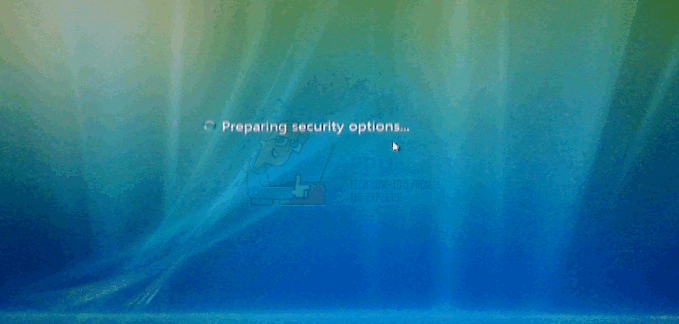What happens when you get this issue is your computer severely slowing down, and when you attempt to open Task Manager via the Alt + Ctrl + Delete combination in order to see which process is slowing down your computer, you will be greeted with the “Preparing Security Options” message and a blue welcome/log off screen. This issue is known to appear after you have updated your computer with a few corrupt updates related to Explorer.exe and the update of Internet Explorer 8 to Internet Explorer 11.
Even though Microsoft representatives have refused to acknowledge that this is in fact their fault, users have come up with a few solutions that might work. One of them will surely help you, and they are pretty easy to do, so make sure you try all of them until you have your problem solved. Note that when searching for a solution to this problem you will run into the method for using your computer in Safe Mode – this turns off all Windows services (Windows Update is among them) and won’t cause the “Preparing Security Options” message, but it will also severely limit the use of your computer and therefore we will not list it as a method to solve this problem.
Method 1: Revert to a System Restore Point when the computer was working properly
NOTE: This method requires you to have created a System Restore Point at an earlier time, when your computer was fully functional. If you haven’t done that, please take a look at the other methods mentioned. To do this, open the Start menu by clicking on the Windows icon on the taskbar, or the Windows button on your keyboard, and type Restore in the search box. From the list of results, open System Restore. Click Next in the System Restore window, after which you should get a list of restore points that you have created earlier, or your computer has created automatically. Select a Date and Time when you know that your computer was working properly, and click Next, then Finish. Your computer will be reverted to the state it was in at the date and time you selected, and if the error wasn’t occurring then – it won’t occur now.
Method 2: Uninstall, then reinstall Internet Explorer 11 manually, not via Windows Update
Because the problem is related to Windows updates concerning Internet Explorer, reverting back to Internet Explorer 8, and then manually installing Internet Explorer 11 will fix it. The steps for removing IE 11 are easy. Open the Start menu via the Windows button on your keyboard, or the Windows icon on the taskbar, and type Add or Remove Programs. Open the app, and you will get a complete list of all software that is installed on your computer. Locate Internet Explorer 11 and click the Uninstall button. This will remove the program from your computer. You should then head to Microsoft’s Internet Explorer 11 download page, and download the appropriate setup for your computer. When the setup file is done with downloading, you have a very straightforward installation process. Reboot your computer at the end for the best results, and you won’t be facing the “Preparing Security Options” anymore.
Method 3: Manually update your hard drive or SSD drivers
Updating your hard drive or SSD drivers will check for any read/write issues between the operating system and storage device, and it has a pretty good chance of fixing your problem. If you have a laptop, you can do this by heading to your laptop manufacturer’s website, locating your specific model and downloading the drivers for Windows 7 (x86 or x64 depends on your OS), then following the instructions on how to install them. If you have a desktop computer, you can check Device Manager for your storage device model, and then head to the manufacturer’s website and download the latest drivers. Device Manager is accessible through the Start menu, and typing Device Manager in the search box. Find your HDD or SSD in the storage devices and search for the model number online – you should get the model number, along with the manufacturer as a result, and you can download drivers from their website.
Method 4: Find specific problems
The shutdown screen does not indicate the specific problem causing the shutdown sequence to stop. If you turn the debugging on by making the following registry changes, you should be able to see what’s preventing your system from shutting down. Once you’ve identified the cause, you can then either disable the “service” or the “program” or repair/uninstall it (if it’s a program). Open registry editor by pressing “Windows Key” and “R” and type in “regedit.” Follow the address: Right click the entry “VerboseStatus” and then click modify. Change its value to 1. If the entry is not showing up, right click anywhere on the white space in the window, Select “New” and then “DWORD (32-bit) Value.“ Create the “VerboseStatus” entry and change the value to 1. Your shutdown screen will now display messages indicating what program is being stopped at which moment.
If a program takes too long, check it at the next startup.
[FIX] Windows 11 Stuck at “Restoring your previous version of Windows"FIX: Windows 8 Stuck on Failure Configuring Windows UpdatesHow to Fix Thread Stuck In Device Driver BSOD on Windows 8 and 10Fix: Windows Update Stuck at 0%
